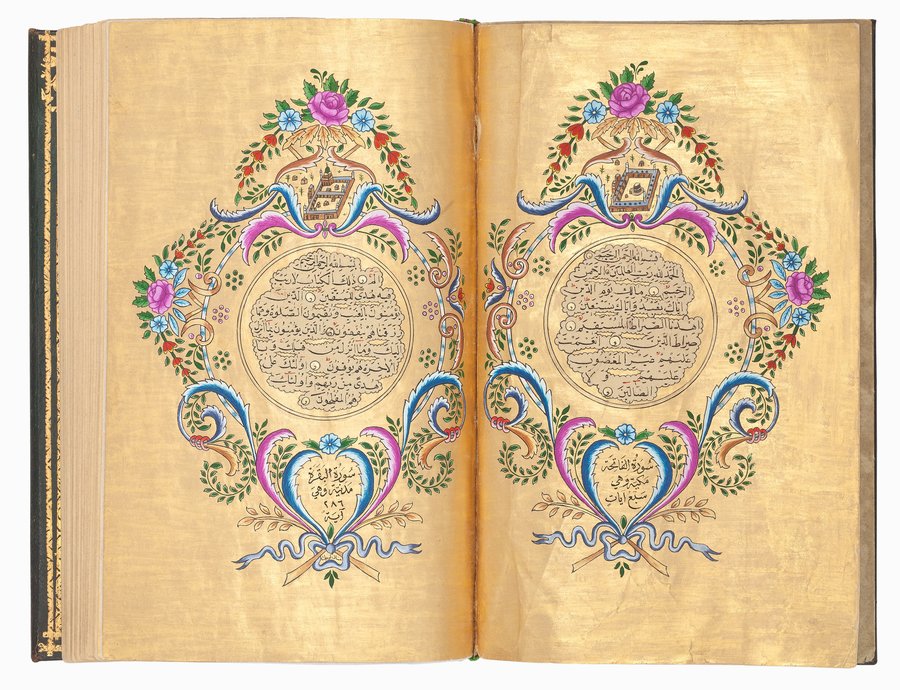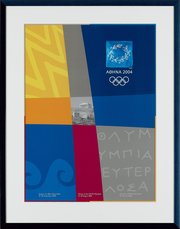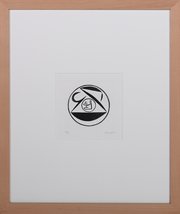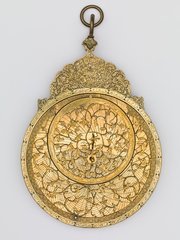
Ottoman Manuscript of the Qur'an
Museum of Islamic Art
- Title:
- Ottoman Manuscript of the Qur'an
- Calligrapher:
- Fatima bint Abdullah
- Illuminator:
- Manal Kucuk
- Production place:
- Mecca
- Date:
- 1843
- Period:
- Ottoman
- Title:
- Ottoman Manuscript of the Qur'an
- Calligrapher:
- Fatima bint Abdullah
- Illuminator:
- Manal Kucuk
- Production place:
- Mecca
- Date:
- 1843
- Period:
- Ottoman
- Material:
- Paper, Ink, Gouache, Gold, Leather
- Technique:
- Bookbinding, Calligraphy, Illumination, Painting
- Dimensions:
- 18 × 12 × 2
This copy of the Qur’an is characteristic of the production of Qur’ans in 13th-century AH / 19th-century CE Turkey, bearing gold double frontispieces and decorated in a rococo style with blue and pink stylized vegetation. Although Qur’ans are mainly aniconic in the Islamic world, some examples of Ottoman Qur’ans copied in imperial workshops like this example, bear depictions of the holy sites, showing the importance given to Mecca and Medina by the Ottoman court, especially knowing the role of the sultan as khadim al-Haramayn (‘Custodian of the two holy cities’) since the conquest of the Hijaz in 922 AH / 1516 CE. The Hajj caravan from Damascus and Cairo to Mecca and Medina would also transport Qur’ans among other gifts to the holy sanctuaries. In this manuscript, the representation of Mecca and Medina are enclosed into small cartouches on the frontispiece and use a bird’s eye view perspective influenced by European prints and reminiscent of the adoption of three-dimensional pictorial space from the 12th century AH / 18th century CE onwards, as seen on representations of naturalistic landscapes in interiors of Ottoman houses. This copy of the Qur’an is signed and dated by two women: a copyist named Fatima bint Abdullah, and the illuminator Manal Kucuk. It demonstrates the presence and role of women in the production of manuscripts in workshops.



